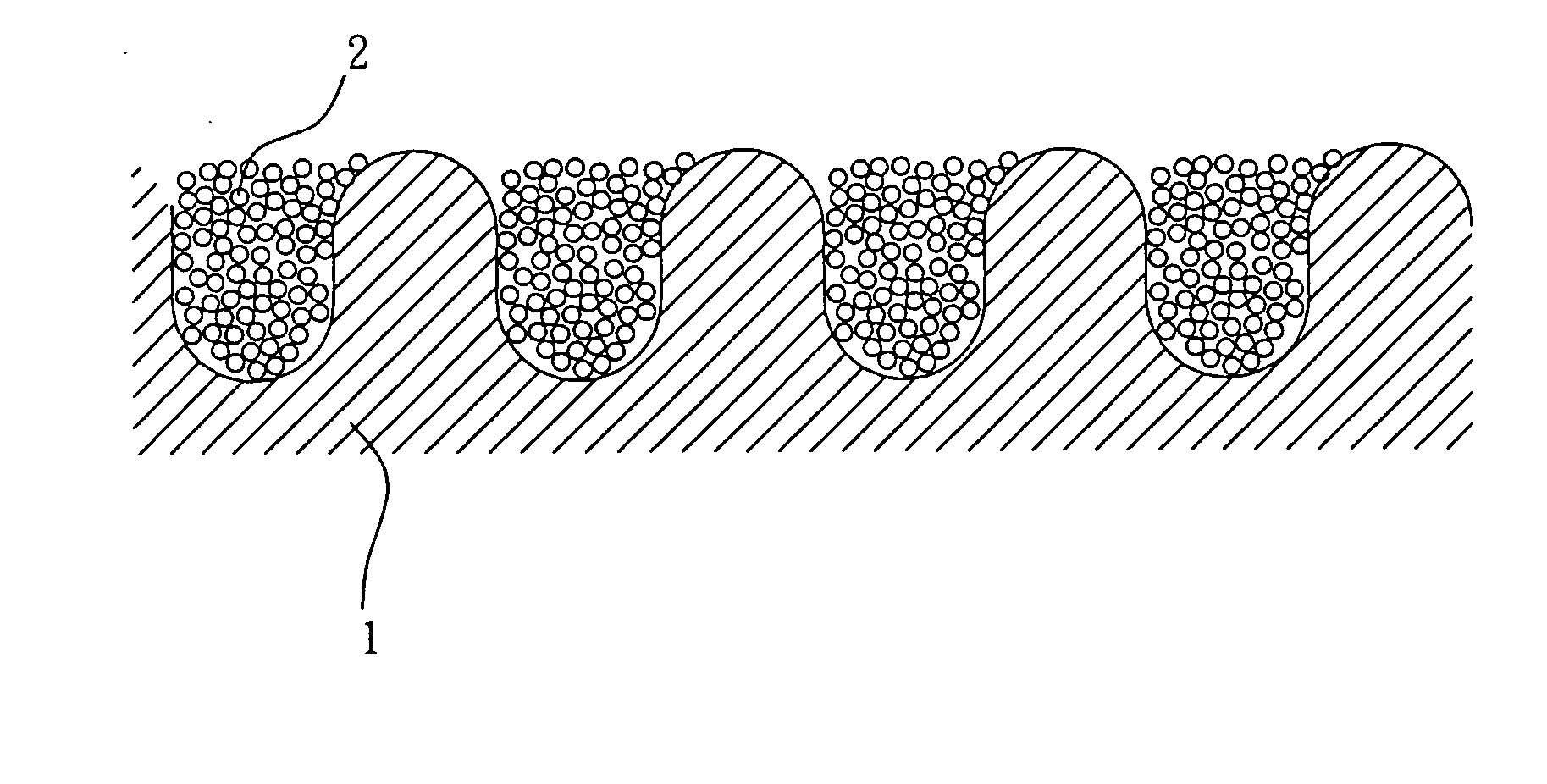Nano photocatalyst coating procedure
a photocatalyst and nano-technology, applied in the field of coating methods, can solve the problems of low efficiency, collapse of organic substances, method is still under study for commercialization, etc., and achieve the effect of preventing the adherence of dus
- Summary
- Abstract
- Description
- Claims
- Application Information
AI Technical Summary
Benefits of technology
Problems solved by technology
Method used
Image
Examples
Embodiment Construction
[0014] The melting points of titanium and zinc are 169° C. and 419.5° c. respectively. By means of the application of nanotechnology, titanium dioxide is processed into nano titanium oxide particles. Thus, the melting point of the mixture of titanium dioxide and zinc oxide can be lowered to below 200° C. The invention uses this melting point changing characteristic to mix nano titanium oxide and zinc oxide into a solution and then to apply the solution to the workpiece, forming a coating at the workpiece.
[0015] Referring to FIGS. 1˜3, a nano photocatalyst coating preparation procedure in accordance with the present invention comprises the steps of: [0016] a). mixing nano titanium dioxide with zinc oxide in a liquid at the ratio of 1:1 to form a nano photocatalyst solution 2; [0017] b). heating the surface of the workpiece 1 to a predetermined temperature level subject to the properties of the workpiece 1; [0018] c). applying the nano photocatalyst solution 2 thus obtained from step...
PUM
 Login to View More
Login to View More Abstract
Description
Claims
Application Information
 Login to View More
Login to View More - R&D
- Intellectual Property
- Life Sciences
- Materials
- Tech Scout
- Unparalleled Data Quality
- Higher Quality Content
- 60% Fewer Hallucinations
Browse by: Latest US Patents, China's latest patents, Technical Efficacy Thesaurus, Application Domain, Technology Topic, Popular Technical Reports.
© 2025 PatSnap. All rights reserved.Legal|Privacy policy|Modern Slavery Act Transparency Statement|Sitemap|About US| Contact US: help@patsnap.com


